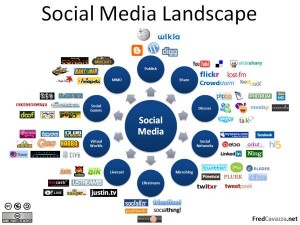IN January, the Washington Post reported on the city’s latest “scandal.”
Evidently, a union organizing drive was underway in a digital-news shop. The “threat” was so real that a right-wing anti-taxer vowed to help fight off the terrible union.
That audacious union was ours.
What the Post didn’t know is that we routinely get phone calls from digital-media employees curious about organizing. Some of those calls turn into full-fledged drives. Others don’t. Or they aren’t public yet as pro-union employees work behind the scenes building support
It shouldn’t come as a surprise that workers like the idea of democracy in the workplace. Despite all the ill-informed badmouthing of unions, surveys show that most workers would join a union given the opportunity. Grievously, the damage that corporations, anti-union politicians and the courts have done to labor law over the years limits those opportunities.
When employees at digital publications call us, they are as likely to talk about working conditions as wages. This is especially true as workers get into their late 20’s and early 30’s—when they’ve decided they want a life as well as a job.
We help these workers any way we can. If they decide to organize, they are in control of the process. They decide what’s important and what a fair contract would look like.
It should go without saying that it’s invaluable to have a signed document that states what the rules are, as well as minimum standards for wages and benefits. You’ll never find an executive who hasn’t negotiated a contract—typically a highly favorable one with a fat exit package even if he or she is fired.
In the turbulent industry that is media today, these conversations are more important than ever. While some employers are smart enough to pay for quality journalism, others see a sea of laid-off writers and editors and scheme to get as much work out of them as possible at the lowest cost. Some are so arrogant and brazen that they use the “cachet” of a byline to barter for work with no pay.
But even the worst of those employers aren’t the parasites that are Google, Facebook and other content aggregators that effectively steal revenue from news organizations.
Whether your organization is all-digital or still has a print component, Google and its ilk are taking advantage. Google would have you believe that its own genius is responsible for its wealth—nearly $5 billion in profit in the last quarter of 2014, up 30 percent from the same quarter in 2013. In fact, those billions are siphoned from your labor and others’ investment.
Fresh, quality, credible information is a precious resource. It gets more valuable every day, as once-proud and respected news organizations slash jobs and wages. As new employers attempt to fill the gaping hole in the quality and quantity of bona fide journalism, it is vital that workers have a voice.
I noted that some people feel threatened by unions and purposely distort what we do, throwing around phrases like “union bosses” and “union thugs.” They want workers to see unions as outsiders who would exploit them. We know that nothing could be further from the truth.
But they spread those lies because workplace democracy is the last thing they want. They demand no limits on their power and greed. They see unions as a threat because history proves how effective we are at improving workers’ lives. They know that unions did, in fact, create America’s now-disappearing middle class.
Unions aren’t the enemy of management. We can and do work with employers to build better products and stronger companies. In our field, no one cares more about the product—journalism—than journalists themselves. When we can negotiate fair wages, benefits and working conditions, quality journalism thrives.
The loudmouth union-haters on certain TV networks and radio shows, have done a huge disservice to the many Americans who are told nothing about the democratic nature of unions and how we function.
There’s nothing “shocking” about journalists or any other workers trying to form a union. They are ordinary people who want some control over their work lives. You may be one of those people. Give us a call. You’ll be in good company.
 Source: marketingmag.ca Will ‘digital first’ lead to a digital burst? The following appears in the Dec. 12 issue of Marketing In his bio on the Postmedia Network website, one of the responsibilities for executive vice-president of digital media Malcolm Kirk included chairing a special committee undertaking Postmedia Network’s “transformation plan.” Kirk and two fellow Postmedia executives, chief information officer Ed Brouwer and senior vice-president, digital content strategy and managing director of Canada.com Scott Anderson, themselves became part of that transformation last month, dismissed in a management shakeup that came with the standard descriptor in such matters: “organizational changes.” Read entire story here
Source: marketingmag.ca Will ‘digital first’ lead to a digital burst? The following appears in the Dec. 12 issue of Marketing In his bio on the Postmedia Network website, one of the responsibilities for executive vice-president of digital media Malcolm Kirk included chairing a special committee undertaking Postmedia Network’s “transformation plan.” Kirk and two fellow Postmedia executives, chief information officer Ed Brouwer and senior vice-president, digital content strategy and managing director of Canada.com Scott Anderson, themselves became part of that transformation last month, dismissed in a management shakeup that came with the standard descriptor in such matters: “organizational changes.” Read entire story here The Knight Foundation’s latest survey of high schoolers found that 92% of students say it’s important to stay informed about the news (the same percentage says it’s important to vote).
The Knight Foundation’s latest survey of high schoolers found that 92% of students say it’s important to stay informed about the news (the same percentage says it’s important to vote).